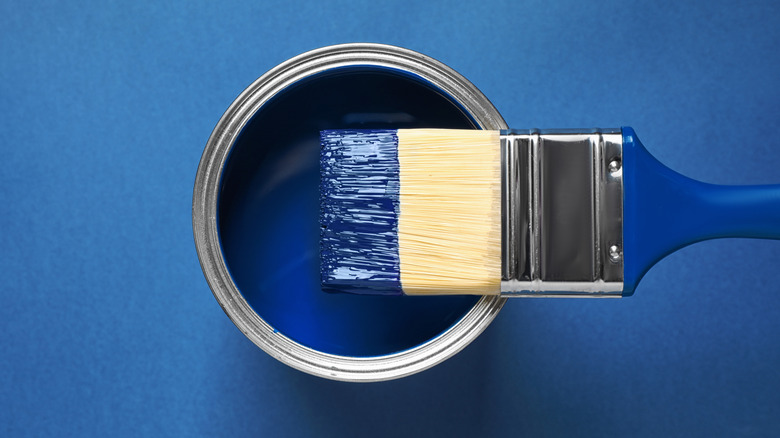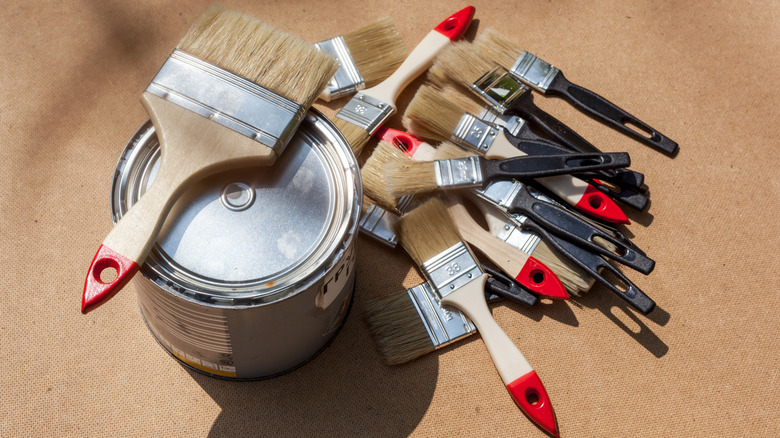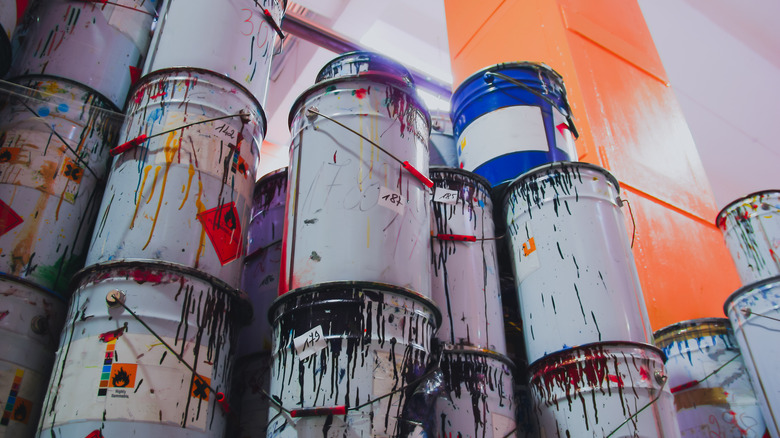The Best Way To Store Your Leftover Paint
Adding a fresh coat of paint to a room can be an excellent way to refresh the space. A new color, no more handprints on the wall, and fewer areas of smudges can help make your space feel brand new.
After that room looks fantastic, you may be wondering what to do with the leftover paint. There's always some paint that's left behind it seems. According to Lowe's, a single gallon of paint typically can cover 350 to 400 square feet of space per wall, though primers cover less, covering no more than 300 square feet. Even if you measured everything out, it's likely you'll still have some paint left over to store.
If you have some projects to tackle with the leftover paint, such as painting the interior of a closet or touching up the trim around the home, do that, as using up any leftover paint tends to be ideal. If you do need to store it, however, here are a few things to know.
Where you put it matters
The first consideration is where to store your leftover paint. If you're storing it, you hope to use it again. Where you place it could help protect the paint's overall consistency to ensure the best use the next time.
Start with a cool and dry area of the home. It's not a good idea to put cans of paint in your garage or even in the backyard shed as these areas tend to have significant temperature swings, which will cause the paint to separate and become unusable. You also don't want to keep paint near flammable materials, as some paints, like oil-based paints, could combust.
The best place is to put your leftover paint in the basement, in an area that's dry. Look for a darker space if possible. You can also store leftover paint in a cabinet. If you can lock the cabinet, that's even better as it could help keep children from accessing it.
Take a few more steps
Tapping the lid back on, you may be tempted to just toss the paint in the basement and forget about it. Before you do that, there are a few additional steps to consider to preserve the quality of any leftover paint in the best way possible.
First, put the lid back on the can immediately rather than letting it sit open for a while. Before you do, use a clean cloth to wipe off the rim and edge of both the lid and the can. That helps to ensure a better seal. For an even better, airtight seal, place a sheet of plastic wrap just under the lid, per Benjamin Moore. Then, tap it with a rubber mallet along the edges to create a secure fit.
Stored properly like this, that can of leftover paint could last several years, allowing you to paint with confidence (and with the exact shade) in the future. In fact, according to Consumer Reports, properly stored leftover latex paint can last for up to a decade. Oil-based paints, meanwhile, can also for 10 years and even longer, if the paint was purchased but never opened (via Forbes).


